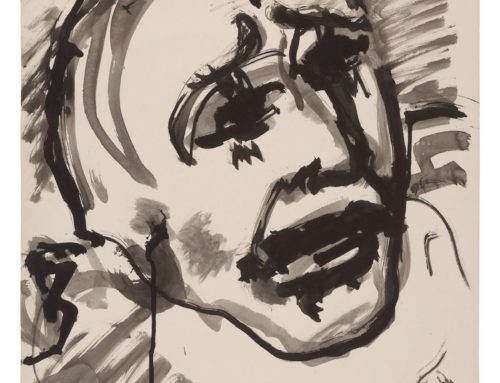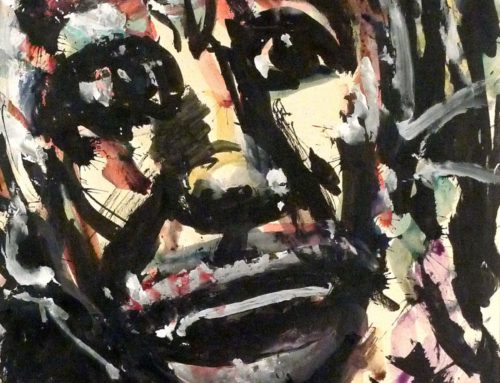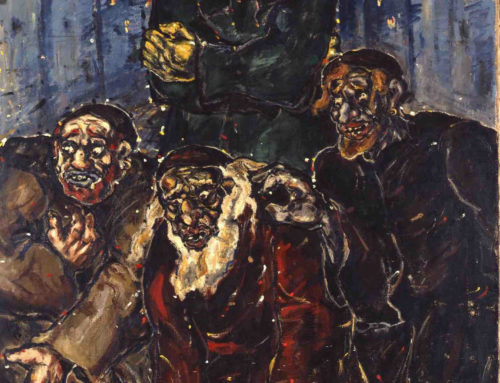“Bajazzo” (“Bajazzo”), 1924/1945
Ascher expended a good deal of paint, ink and pencil lead on depicting clowns—specifically, the sort of clowns that Ruggero Leoncavallo’s 1882 opera, I Pagliacci (The Clowns) made famous: the clown who weeps within (usually because of a heart broken by unrequited love) as he dons his make-up to make the people laugh—who have paid their money to laugh. The motif of the clown who laughs as symbolic of the Jew who entertains on the stage of history while inwardly weeping would later be explored by other Jewish visual artists, like Jacques Lipchitz, in his 1926 sculpture, Pierrot Escaping. Might we suppose that Ascher embraced this aspect of the “Lone Man” theme as possessing a specifically Jewish aspect to it? What are the particular qualities of this clown, in terms both of painting technique and the emotional presentation of the subject?










